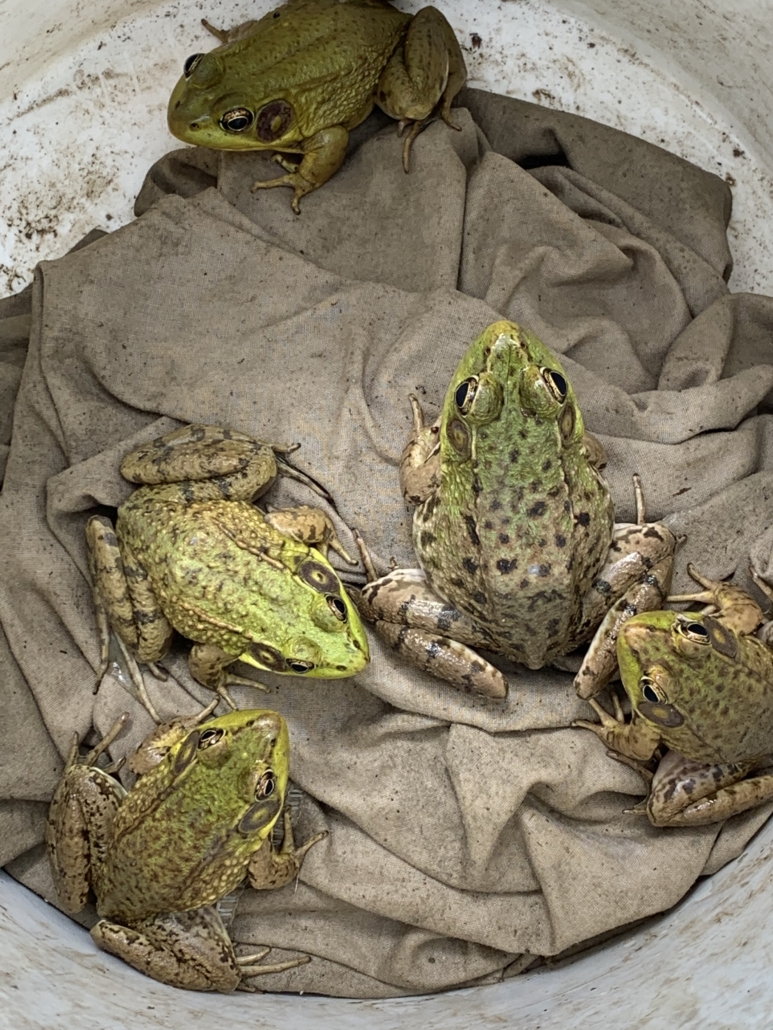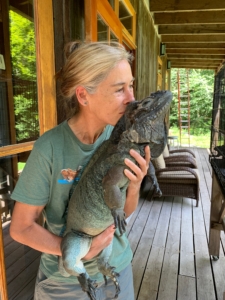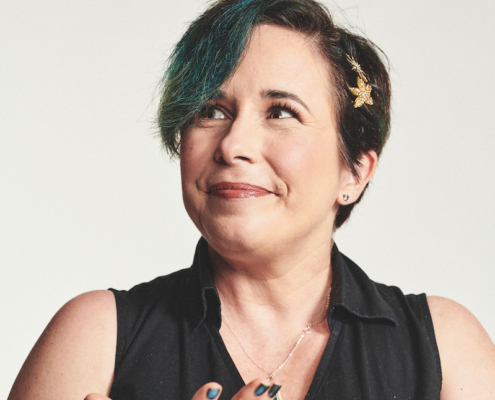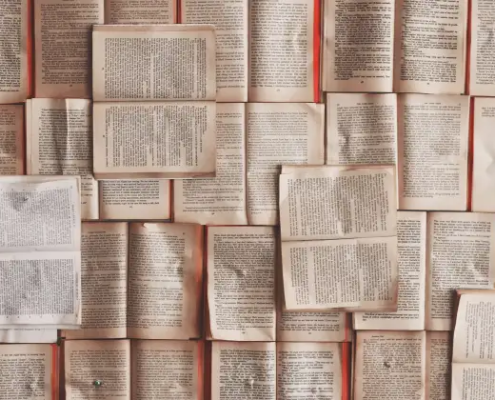‘The Frog’ by Wendy Townsend ’02
When the pandemic really took hold, I’d started working 60-hour weeks protecting reptiles and amphibians on utility construction and repair sites. From 7 a.m. to 5 p.m., April through October, I walked the job sites in my hardhat and day-glow vest with my snake stick, and while I moved animals out of immediate harm’s way, I watched the destruction of their habitats.
Even before the pandemic, my crisis wasn’t about illness, or unemployment, but about keeping faith in my purpose as a writer.
I’ve written my stories of being at a pond with frogs and turtles, and meeting lizards in a tropical forest. In these wild places, with these beings, I find acceptance and a security that can’t be taken away, except by the destruction of the ponds and forests. I’ve hoped readers would grasp what I’m saying and feel as I do about protecting the earth.
Science shows how over-consumption of nature causes pandemics, but I can’t see social or political will to change our behavior. I want to stop striving, and stay home in the barn with my lizards, and write light-hearted things.
I’m reading the hot new memoir by Dara McAnulty, Diary of a Young Naturalist. On my bike ride to the place where I give thanks to the trees across the Delaware river I thought about why McAnulty’s book affects me to the point of obsession. He describes the creatures he meets with such love that it’s clear he could not survive without them: he must show Reader what he sees and how he feels about what he sees. Image, emotion, energy, I would tell my writing students. That’s the way to write! It’s the nature writer’s best hope for moving people to re-connect with empathy that’s dormant. As McAnulty shows again and again, the reward for opening to the other –butterfly, tree, bird, frog—is opening to our best selves, to joy, to our humanity. It’s soul-saving.
I feel the same as McAnulty about wildlife and nature, but I’ve struggled to say so. I still have a story to tell but I am disconnected from publishing and feel time running out. The frustration grips my throat. Unexpressed love.
Here’s how I opened an essay back in 2015, for an online magazine called Talking Writing:
“On a recent winter morning, I sat at my desk, struggling to write about a girl and a frog. I wanted my intended audience of young readers to see the frog the way I had as a child. Six years old, standing barefoot in the mud, holding my frog, I’d been part of his world and never wanted to leave. There was something between us. What I’d wanted most was for the frog to know I was his friend.
As an adult writer, though, I remained stuck in my head, self-conscious, afraid to seem sentimental—until I looked up and saw a ladybug crawling across the window. On impulse, I dipped my fingers in a glass of water and flicked drops on the pane. The ladybug changed direction, heading straight for a drop, and I watched it drink. I felt giddy; I sat up in my chair. Seeing the ladybug take what I’d offered connected me to it, bringing me back to my original impulse for telling the story—which was love.”
I sense another beginning in my writing that has to do with self-acceptance. I understand myself better and how I’ve strangled my words and made such a huge deal out of craft before they even went down on the page, rather than writing what I see and feel and then crafting with a kinder hand.
I can’t give up. I have to add my voice to the cause.
A recording of this piece is podcast in partnership with Read 650 in Carnegie Hall’s “Voices of Hope” festival. The longer version is just out on Talking Writing.







